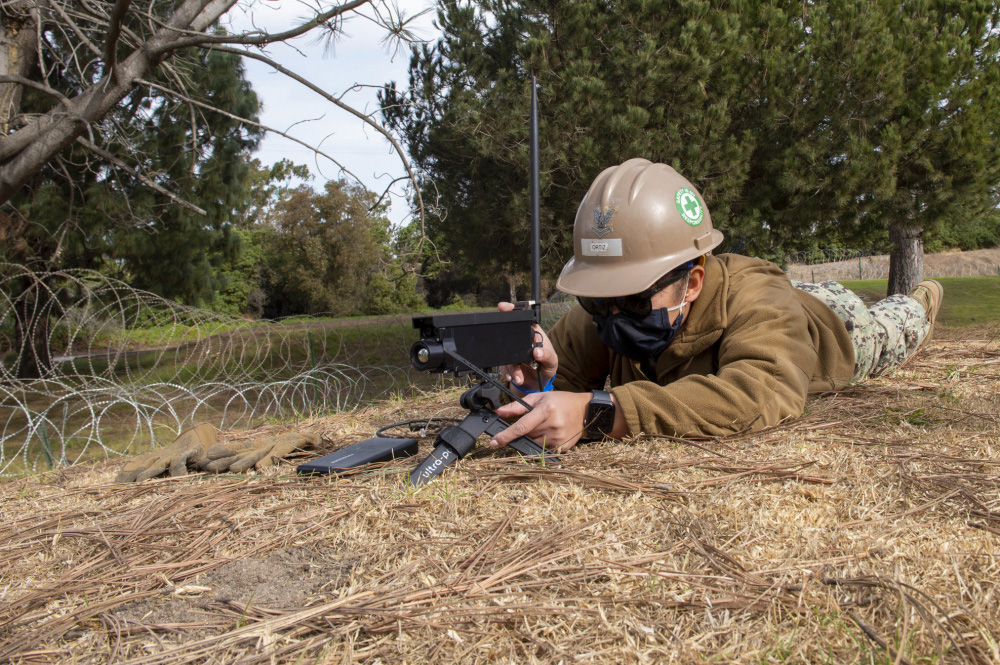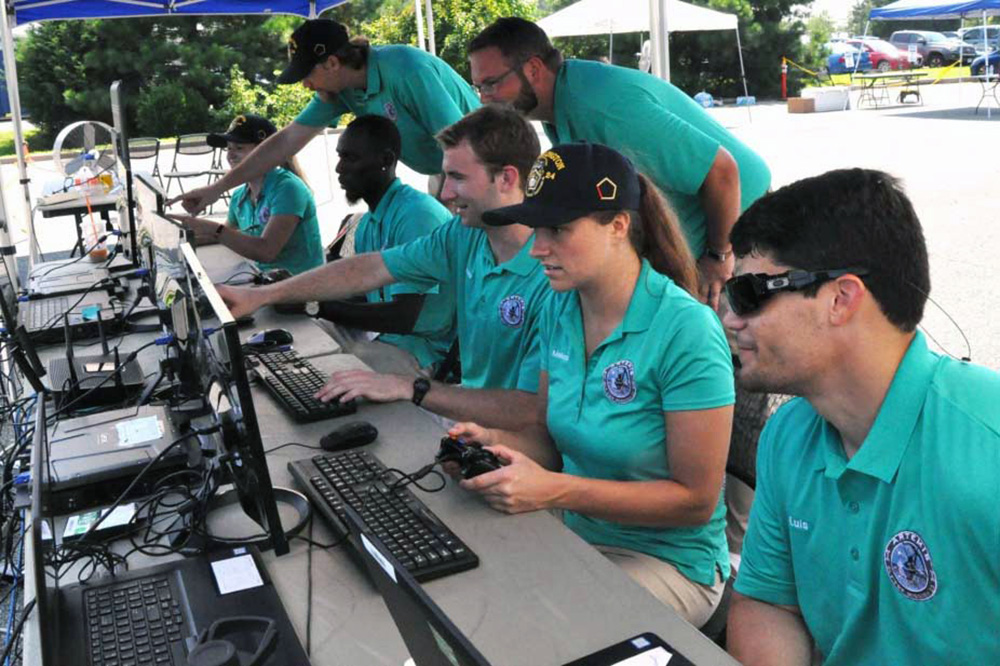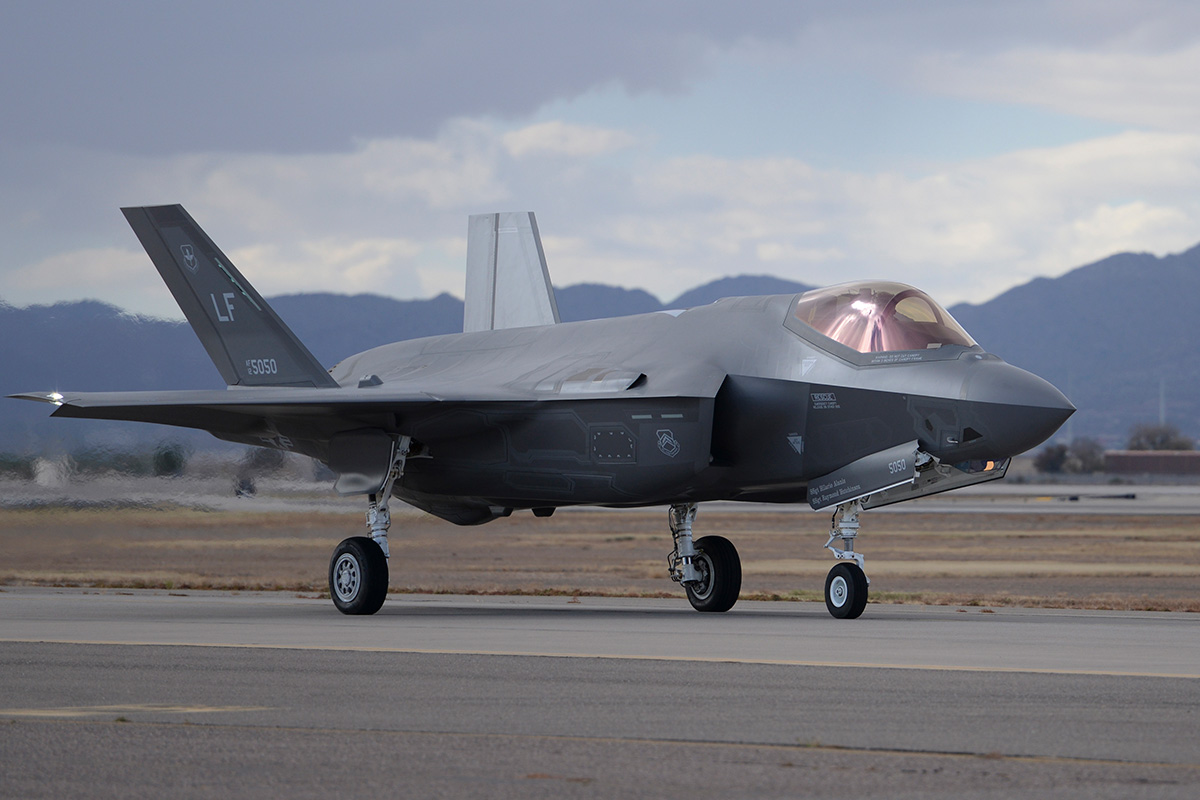An effective national technology strategy requires investments in critical and emerging technologies, the director of the Defense Innovation Unit said.
The U.S. needs to maintain its leadership in areas such as quantum computing, microelectronics, artificial intelligence, semiconductors and aerospace, he said. “This requires a national statement that we want to be premier in these technologies and that’s going to require investment in basic research.”
Federally funded research and development has declined precipitously since the Cold War. In the 1960s, 2% of gross domestic product went to research and development. Now, it’s 0.35%, he said.

Petty Officer 2nd Class MaryJoy Ortiz, with Naval Mobile Construction Battalion 5, sets up surveillance cameras during the Naval Mobile Construction Battalion 5’s second command post exercise onboard Naval Base Ventura County, Calif., Dec. 7, 2020. © Navy Petty Officer 1st Class Stephane Belcher
Meanwhile, China now has created a pretty big gap in terms of the number of engineers they’re graduating relative to the U.S., he noted.
In the U.S., capital markets are rewarding very short-term performance measures. “With that short-term nature we’re not building the kind of national capabilities we need,” Brown said.
On the other hand, competition is good and is what has allowed the U.S. to have such a prosperous economy.

The Naval Surface Warfare Center Dahlgren Division’s Sly Fox Mission 23 team demonstrates autonomous remote tactical engagement multi-domain intelligence swarm capabilities, in Dahlgren, VA., Aug. 7, 2018. © John Joyce, Navy
Brown also mentioned the importance of sharing critical technologies with allies and partners and avoiding duplicative research.
Talent management was also addressed.
“What we’re doing to bring in technology talent into the department is insufficient to meet the challenge,” he said.
There are a number of fellowship programs in the department. One is sponsored by DIU: the Technology and National Security Fellowship program, he said.

An F-35 taxis from the runway onto the flightline after successfully completing a sortie at Luke Air Force Base, Ariz., Dec. 14, 2015. Computers aboard aircraft such as the F-35 are built with microelectronics, and the Defense Department must ensure those microelectronics are safe to use before they are installed in weapons systems.. © Air Force Airman 1st Class Ridge Shan
However, the number of such programs is not really meeting the needs. “The successes here are too small relative to what we need for the challenge going forward,” he said.
Brown noted that in Silicon Valley where DIU is headquartered, immigrants have played an important part in the growth of cutting edge companies.
The Defense Department needs to attract the best talent possible, he said, both from within the department, from allies, partners and immigrants.





